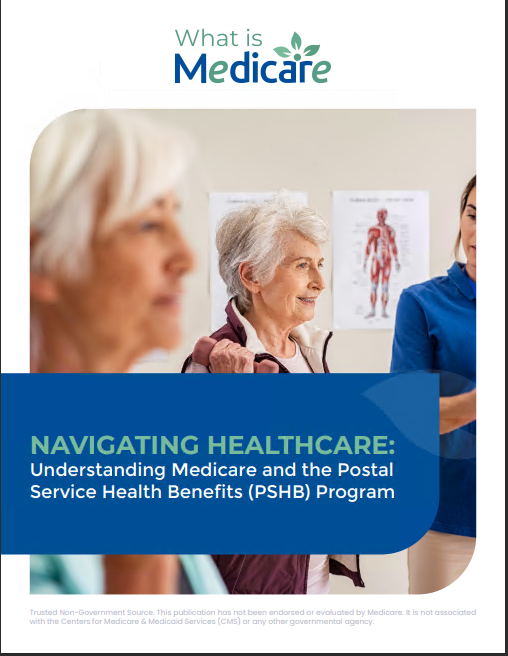Key Takeaways
-
Understanding Medicare enrollment timelines is critical to avoiding penalties and coverage gaps.
-
Knowing the specifics of Medicare Parts A, B, C, and D ensures you get the coverage that matches your healthcare needs.
Why Timing Your Medicare Enrollment Matters More Than You Think
Enrolling in Medicare at the right time isn’t just about ticking a box on your to-do list—it’s about securing your health and financial stability. Missing enrollment periods can mean expensive penalties and gaps in healthcare coverage, leaving you vulnerable when you least expect it.
Here’s a breakdown of crucial enrollment periods and details that you need to know right now, in 2025.
Your Initial Enrollment Period (IEP): Don’t Miss This Window
Your Initial Enrollment Period (IEP) is your very first chance to sign up for Medicare. It spans seven crucial months:
-
Three months before you turn 65
-
The month of your 65th birthday
-
Three months after your birthday month
During this window, you can enroll in:
-
Medicare Part A (hospital insurance)
-
Medicare Part B (medical insurance)
-
Medicare Part D (prescription drug coverage)
If you enroll during the first three months before turning 65, your coverage starts on the first day of your birthday month. Delaying enrollment can push back coverage start dates, creating unexpected gaps in your health coverage.
What Happens If You Miss Your Initial Enrollment?
Missing your IEP isn’t just a minor inconvenience—it can significantly impact your finances. Here’s what could happen:
-
Part B Penalties: You could face a permanent penalty of 10% added to your Part B premiums for every 12-month period you delay enrollment.
-
Part D Penalties: You’ll pay an extra 1% for each month you delayed enrollment in Part D, applied indefinitely to your monthly premium.
Avoid these long-term penalties by enrolling on time.
General Enrollment Period (GEP): Your Second Chance
If you missed your initial enrollment, you get another opportunity during the General Enrollment Period:
-
Runs from January 1 through March 31 each year.
-
Coverage begins on July 1.
Although it’s reassuring to have this second chance, waiting for the GEP can leave you uninsured for several months, increasing the risk of unexpected healthcare costs.
Special Enrollment Period (SEP): Qualifying Life Changes Matter
Life doesn’t always go as planned, and Medicare recognizes that. Certain events trigger a Special Enrollment Period (SEP), allowing enrollment outside the typical timelines. Common qualifying life events include:
-
Retirement and loss of employer-sponsored coverage
-
Moving to a new geographic region
-
Losing existing coverage (e.g., COBRA or Medicaid)
Typically, you’ll have eight months after losing your employer-based coverage to sign up for Medicare without facing penalties.
What You Need to Know About Medicare Coverage Options
Medicare isn’t just a single option—it’s a variety of coverages tailored to your unique health needs. Understanding these parts will help you select the best combination for your situation.
Medicare Part A: Hospital Coverage Essentials
Part A covers inpatient hospital stays, hospice care, limited home healthcare, and skilled nursing facility care after hospitalization. Most people qualify for premium-free Part A if they or their spouse worked at least 10 years (40 quarters). If you don’t qualify, monthly premiums in 2025 are approximately $518 (less than 30 quarters of employment) or $284 (30-39 quarters).
Medicare Part B: Your Gateway to Medical Services
Part B covers doctor visits, outpatient care, medical supplies, preventive screenings, and lab tests. For 2025, the standard Part B monthly premium is $185, with an annual deductible of $257. Higher earners might pay more based on their income.
Medicare Part C: The All-In-One Approach
Also known as Medicare Advantage, Part C bundles Parts A, B, and usually D. Offered through private insurers, Medicare Advantage plans vary widely in coverage and cost-sharing, so carefully comparing options is crucial. Be aware that specific pricing and availability vary widely depending on your location.
Medicare Part D: Prescription Drug Coverage
Prescription drug coverage is essential for managing health conditions affordably. Part D helps cover prescription medication costs. In 2025, Part D plans have a maximum deductible of $590, and there’s an annual out-of-pocket cap of $2,000 on prescription costs. These plans can significantly reduce your medication expenses.
Medicare Supplement Plans: Filling the Gaps
Original Medicare (Parts A and B) doesn’t cover everything. Supplemental plans, also known as Medigap, help cover copayments, coinsurance, and deductibles. They’re standardized by Medicare and labeled with letters (Plans A-N). Premiums vary depending on the type of plan and your location.
What to Consider Before You Enroll in Medicare
Before you finalize your Medicare enrollment, ask yourself:
-
Are my current doctors and medications covered under the plan?
-
How much flexibility do I want when choosing healthcare providers?
-
Can I comfortably afford monthly premiums, deductibles, and copays?
-
Am I frequently traveling out of state, requiring broad network coverage?
Answering these questions can prevent future dissatisfaction or financial strain.
The Annual Enrollment Period (AEP): Your Opportunity to Adjust Coverage
Every year from October 15 to December 7, you have the chance to make changes during Medicare’s Annual Enrollment Period. This is the ideal time to:
-
Switch from Original Medicare to Medicare Advantage (or vice versa)
-
Enroll in or switch Medicare Part D prescription drug plans
-
Adjust your current Medicare Advantage plan
Any changes you make during this period take effect January 1 of the following year, helping you align your coverage with changing healthcare needs.
Medicare Advantage Open Enrollment Period: An Additional Chance to Fine-Tune
From January 1 to March 31 each year, current Medicare Advantage members have another chance to:
-
Switch to another Medicare Advantage plan
-
Return to Original Medicare and enroll in a Part D plan
Remember, this is limited to current Medicare Advantage enrollees only and allows just one change per period.
When to Reach Out for Professional Medicare Advice
Medicare enrollment and plan selection can be complicated, especially if you’re new to it. Consulting with a licensed professional can save you from potential missteps, ensuring you’re well-covered without overpaying. It’s always better to clarify doubts early rather than face costly surprises later.
Secure Your Health: Take Charge of Your Medicare Enrollment Today
Understanding Medicare enrollment details can feel overwhelming, but taking the time to get it right is essential to safeguarding your health and financial stability. If you’re nearing eligibility or reviewing your options during an enrollment period, consider speaking with a licensed agent listed on this website. They can guide you through choosing plans tailored to your unique healthcare needs, ensuring you’re confident and prepared for whatever comes your way.










